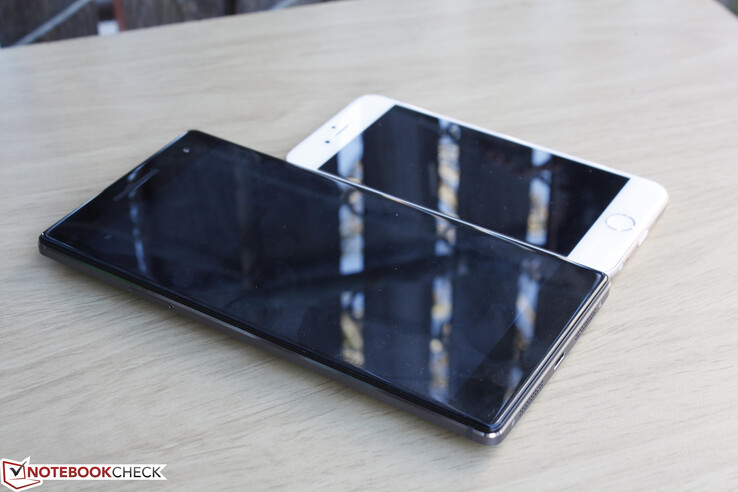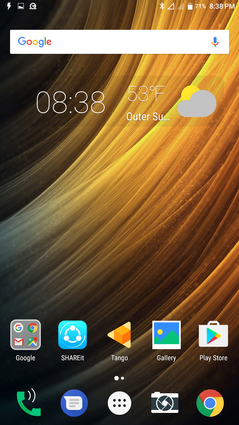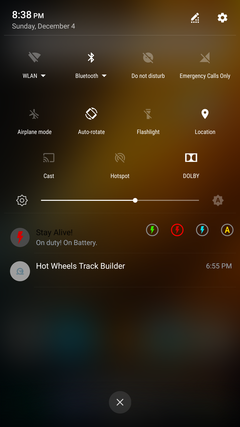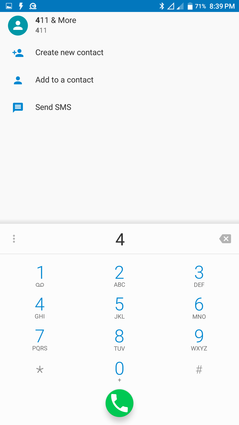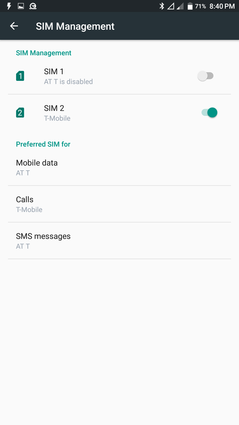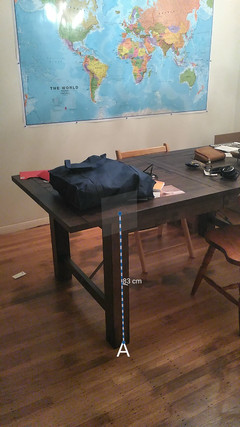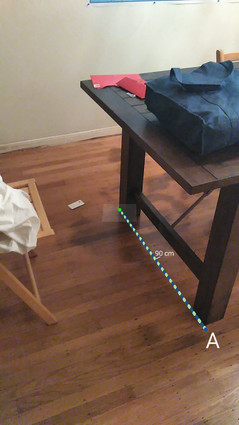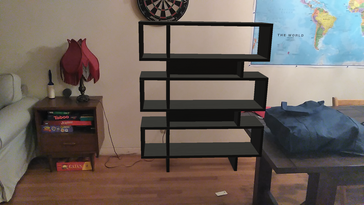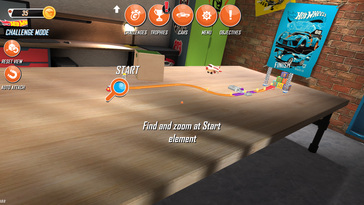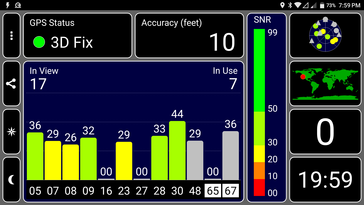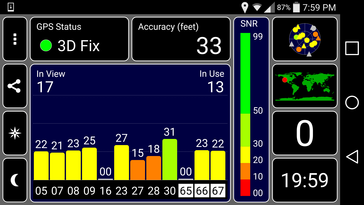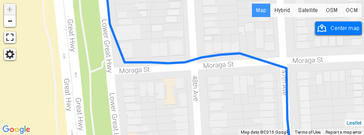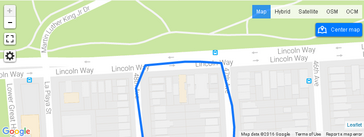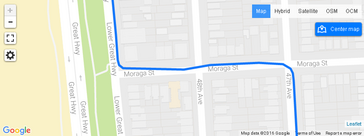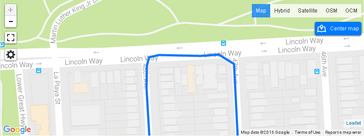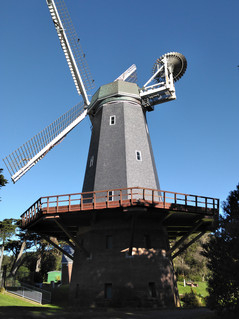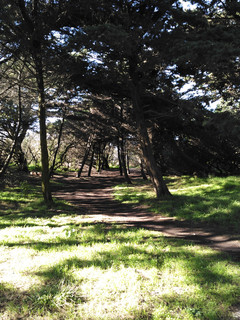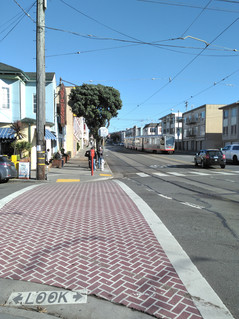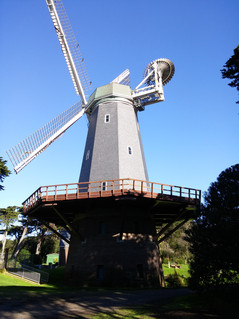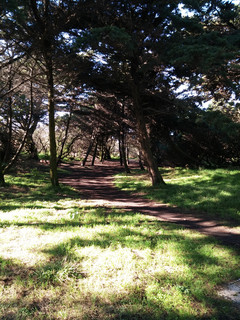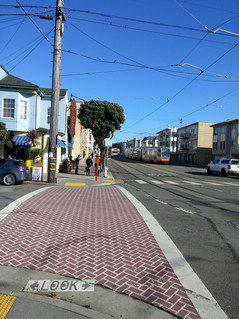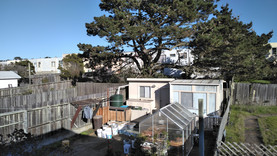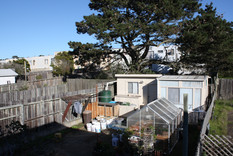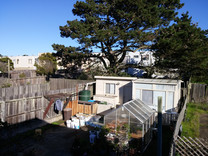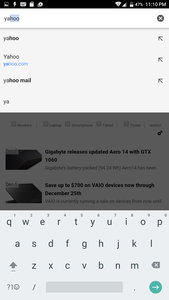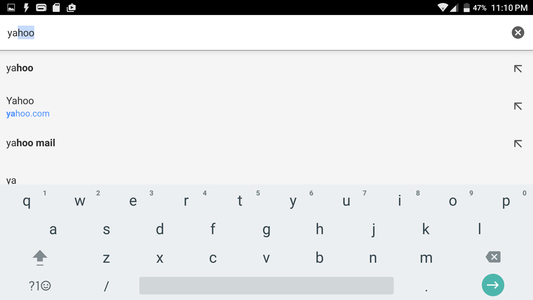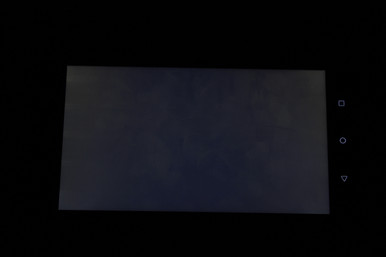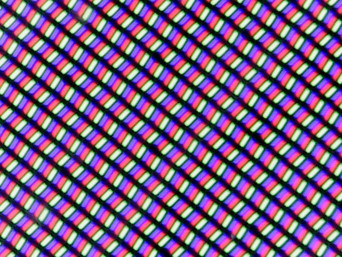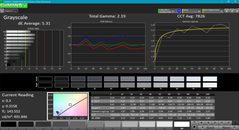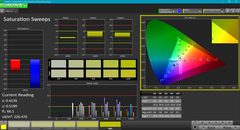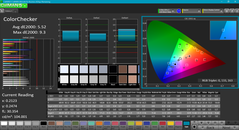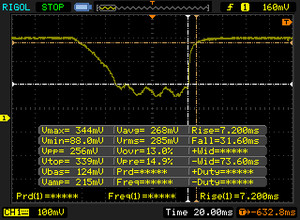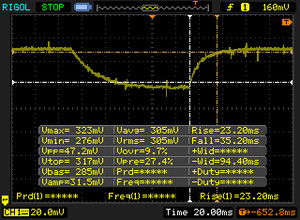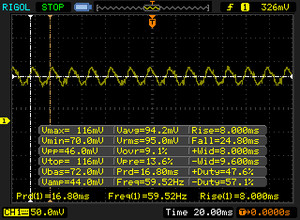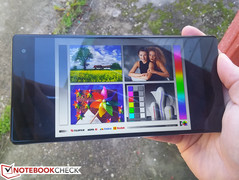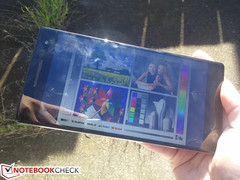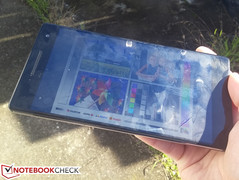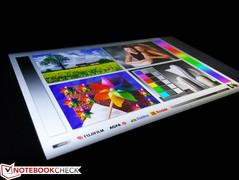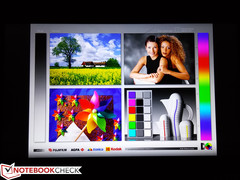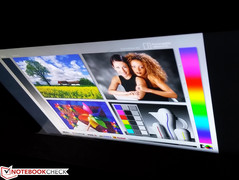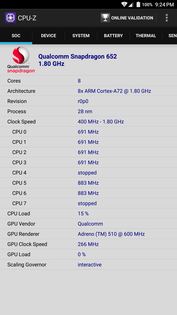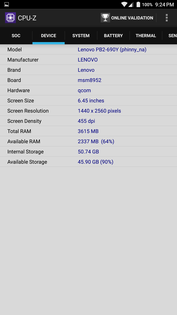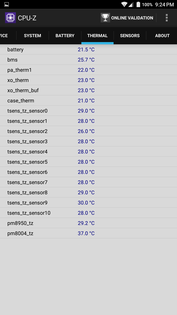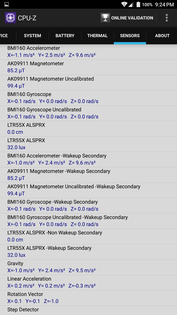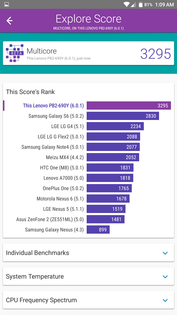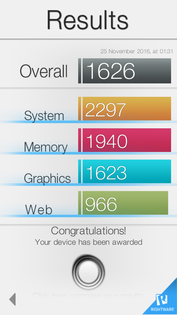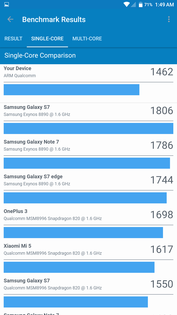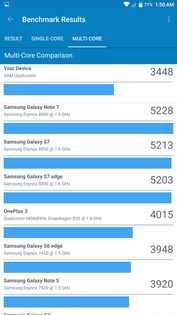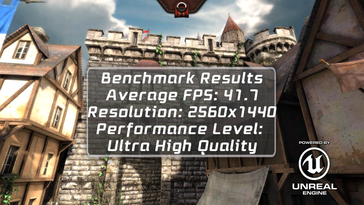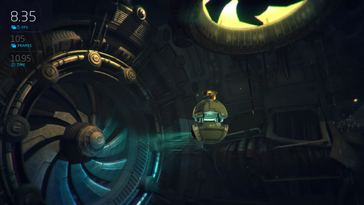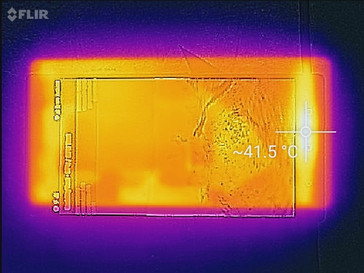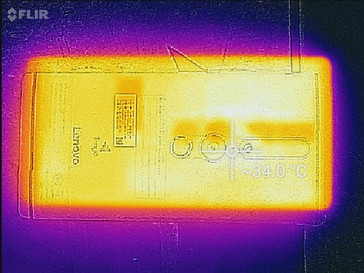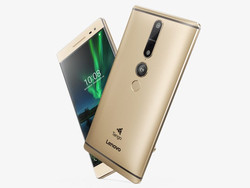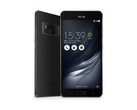Lenovo Phab 2 Pro Smartphone Review
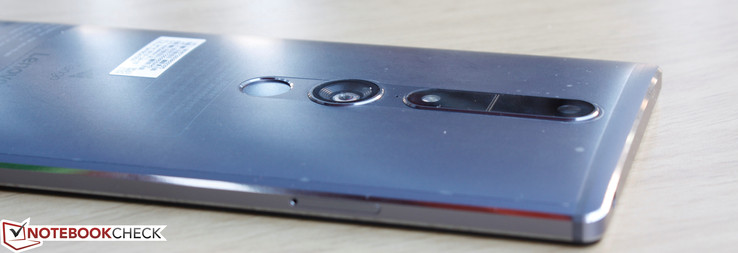
The Phab 2 Pro is Lenovo's flagship model in its mainstream Phab 2 series and it also marks the manufacturer's first smartphone to officially launch in the United States. In order to distinguish the Phab 2 Pro from the sea of other alternatives, Lenovo has outfitted the device with Google Tango and is currently the only consumer smartphone available with such a feature. This indoor positioning and 3D camera technology was highly vaunted by Lenovo at CES 2016 and we've been told that the manufacturer has at least a 6-month exclusivity deal for use on its devices. As a result,Tango devices from competing manufacturers may not be available for purchase until the latter half of 2017.
Aside from Tango, the Phab 2 Pro is also one of the larger smartphones available with its mighty 6.4-inch QHD screen. In order to keep MSRP under $500 USD, however, a few common features had to be cut and so the smartphone can sometimes feel like a flagship offering brought down by some mainstream hardware.
Case
The Phab 2 Pro gets a much-needed redesign compared to the modest original Phab and Phab Plus. The metal chassis is rounder on the back and the chrome-cut edges and corners give off a higher-end feel. Additionally, plastic strips run along the top and bottom of the device for optimal antenna reception not unlike on most current smartphone designs.
Build quality is flawless on our test model and the chassis feels solid from top to bottom. We can notice no uneven gaps between materials while the heavy weight gives a firm impression with almost no creaking or warping when attempting to bend the device. Large smartphones may bend more easily down the center, but the new Lenovo is quite thick even for its size for increased rigidity.
Whereas 5-inch smartphones are generally in the 150 g to 200 g range, the 6.4-inch Phab 2 Pro is quite hefty at almost 260 g. Combine this with the >10 mm thick design (or 8.9 mm thick at its thinnest) and you have a phone that is uncomfortable to use with only one hand for extended periods. The user's palm, for example, can very easily make contact with the edge of the screen for accidental inputs. Our comparison pictures above show just how much larger the Phab 2 Pro is compared to a standard iPhone 6.
Connectivity
The standard Micro-USB 2.0, 3.5 mm audio, and dual Micro-SIM slots are available here. Like on most dual-SIM smartphones, the MicroSD slot is shared with the second SIM slot. Some users may complain about the lack of USB Type-C, but there's no denying that the tried-and-true Micro-USB port will be instantly compatible with existing cables without any adapters needed.
USB OTG is supported and we experienced no issues when connecting generic mice and keyboards. The cursor and typing latency, however, will not be as instant as on a standard desktop. Other features like NFC or MHL are not available on the Phab 2 Pro.
Software
Tango software, of course, is the focus of the smartphone. Instead of pre-loading the device with dozens of Tango apps, Lenovo offers a single app that acts as a gateway to finding and downloading all kinds of Tango apps available. The list is short at just under 30 apps at the time of writing and most are simple augmented reality games (WOORLD, Raise, Hot Wheels, etc.) for children. Tango apps benefit from the roomy 6.4-inch screen since they almost always utilize superimposed images. A large screen appears to be key to a smooth interactive Tango experience and may be the reason why Lenovo's first Tango smartphone is as big as it is.
Unfortunately, the experience is far from perfect. Virtual objects tend to jitter or clip through real-world objects that may be positioned closer to the camera. Users who have interacted with a Microsoft Kinect platform will have a good idea of the imperfect tracking here. Renderings are real-time, but textures are extremely basic with flat colors and almost no depth for a very cartoony experience. It's hard to shake off the "first generation" or "beta" feel that many of these initial Tango apps offer.
Beyond the entertainment value, Lenovo and Google have vaunted the ability to see and place virtual furniture into rooms before purchasing the product. Current apps include Wayfair and Lowe's with the latter being much more developed than the former. The Wayfair application crashed at least twice during use and its in-app catalog is not a full representation of its online selection. Inputting the same keywords onto the app, for example, can often bring up no results while the online store can return hundreds of matches. When a 3D model is finally rendered, it can be clunky to simply rotate or move and the final result can sometimes feel more frustrating than helpful.
Larger furniture pieces like couches or tall bookshelves are more difficult to place as the smartphone camera must be further away from the area of interest. This makes Tango awkward to use in small rooms since the rear camera carries no optical zoom capabilities.
Can Tango work outdoors? We attempted to measure the distance across the street and the heights of houses, but the software and its cursor become very jumpy. Anything more than 8 or 10 meters away and the depth perception of the camera will begin to struggle.
Communication and GPS
Dual-band WLAN is supported up to 802.11ac with integrated Bluetooth 4.0. Real-world average transfer rates are fast in the 250 to 300 Mbps range when standing one meter away from our Linksys EA8500 test router, though not as fast as the latest Pixel XL from Google under similar conditions.
The integrated GPS appears to be more accurate than on our G3 comparison according to GPS Test. TTFF is fast even without WLAN assistance and we experienced no issues when used for navigation purposes. When compared to a dedicated Garmin 500 GPS, the Phab 2 Pro is less accurate around corners as is common on most smartphone GPS modules.
| Networking | |
| iperf3 receive AX12 | |
| Google Pixel XL 2016 | |
| Lenovo Phab 2 Pro | |
| Huawei Mate 9 | |
| Asus Zenfone 3 ZE552KL | |
| iperf3 transmit AX12 | |
| Google Pixel XL 2016 | |
| Lenovo Phab 2 Pro | |
| Huawei Mate 9 | |
| Asus Zenfone 3 ZE552KL | |
| SD Card Reader | |
| maximum SDCardreader Maximum Transfer Rate | |
| average SDCardreader Average Transfer Rate |
Telephone and Call Quality
Dual nano-SIM slots are available which, while common overseas, is uncommon in the United States. The primary SIM slot is compatible with 4G GSM networks in the U.S. whereas the secondary slot is limited to 3G. We experienced no issues connecting to the 4G networks of AT&T or T-Mobile during our time with the test unit. T-Mobile reception is only average at around half bars even in the outer San Francisco bay area.
Call quality is good with no major static or skips for both the caller and receiver (in this case a LG G3). The speakerphone is surprisingly very clear owing in part to the wide frequency range of the integrated speaker. Its maximum volume is loud and introduces no major static or sound imbalances to be one of the better speakerphones we've tested.
Cameras
Camera quality from the rear 16 MP sensor is good with more natural colors compared to the rear camera on the LG G3. Images tend to be slightly more overexposed, however, as can be seen below where the brightly-lit green grass and white buckets are more difficult to distinguish between them on the Phab 2 Pro. The 0.3-second auto-focus works as advertised and reacts much more reliably than on cheaper budget smartphones.
The camera is poor in low-light conditions and its slow integrated Flash does little to help. Pictures are blurry with distracting noise, though such results are common on most smartphones and the Phab 2 Pro is no different.
Video quality is good as blurring is kept to a minimum when panning across a scene. Unfortunately, the camera can only record up to 1080p at 30 FPS whereas the latest flagship smartphones can reach higher frame rates and higher native resolutions like on the Galaxy S7. It would have been excellent to be able to record at the native QHD resolution of the Phab 2 Pro, for example.
Accessories and Warranty
Included extras are a Quick Start guide, pair of earbuds, Micro-USB cable, PIN needle, and AC charger. The USB cable is capable of both charging and data transfer whereas some budget alternatives have charging-only cables.
Warranty is the standard 12-month limited protection in the United States. Please see our Guarantees, Return Policies and Warranties FAQ for country-specific information.
Input Devices and Handling
The 10-point capacitive touchscreen responds swiftly and reliably including around its corners and edges. Onscreen text, for example, will appear with minimal delay even for fast typists and the large screen will naturally reduce the number of mistypes. On the flip side, typing on the Landscape orientation will be difficult for smaller hands since the center of the display can be hard to reach for the thumbs. Swype-like features and predictive typing are both included on the default onscreen keyboard.
The bottom bezel houses the traditional Back, Home, and Tabs touch-sensitive backlit buttons in that order. Meanwhile, the fingerprint reader on the back works reliably and quickly no matter the orientation of the finger. The main issue is the awkward positioning of the fingerprint reader near the center of the back of the phone. It simply does not feel as natural to use compared to front-facing fingerprint readers as users will have to hold the phone at an optimum position first to use the rear reader before readjusting the hand again to hold the smartphone more comfortably.
Display
The large 6.4-inch QHD (2560 x 1440) screen distinguishes the Phab 2 Pro from much of the competition. Subjectively, colors and text are crisp and the PPI is dense enough that we cannot notice the screen door effect even when up close.
Outside of its size and high resolution, however, other aspects of the screen don't quite match the competition. Maximum backlight brightness sits at under 500 nits compared to 550 nits and over 600 nits on the iPhone 7 Plus and Zenfone 3, respectively. Contrast is good, but not as deep as on the Huawei Mate 9 and colors are not as accurate as well. Response times are average and ghosting is much more noticeable here on the Phab 2 Pro compared to the screen on the iPhone 7 Plus.
There is no major backlight bleeding with only slight unevenness around the top and bottom edges of the screen.
| |||||||||||||||||||||||||
Brightness Distribution: 93 %
Center on Battery: 472.4 cd/m²
Contrast: 980:1 (Black: 0.482 cd/m²)
ΔE ColorChecker Calman: 7 | ∀{0.5-29.43 Ø4.77}
ΔE Greyscale Calman: 7.9 | ∀{0.09-98 Ø5}
83.1% sRGB (Calman 2D)
Gamma: 2.34
CCT: 7826 K
| Lenovo Phab 2 Pro IPS, 6.4", 2560x1440 | Apple iPhone 7 Plus Retina HD, IPS, 5.5", 1920x1080 | Huawei Mate 9 IPS, 5.9", 1920x1080 | Asus Zenfone 3 ZE552KL IPS, 5.5", 1920x1080 | Google Pixel XL 2016 AMOLED, 5.5", 2560x1440 | |
|---|---|---|---|---|---|
| Display | |||||
| Display P3 Coverage (%) | 67.2 | ||||
| sRGB Coverage (%) | 99.8 | ||||
| AdobeRGB 1998 Coverage (%) | 69 | ||||
| Response Times | 44% | 13% | 6% | 92% | |
| Response Time Grey 50% / Grey 80% * (ms) | 58.4 ? | 29 ? 50% | 57 ? 2% | 56 ? 4% | 4 ? 93% |
| Response Time Black / White * (ms) | 38.8 ? | 24 ? 38% | 30 ? 23% | 36 ? 7% | 4 ? 90% |
| PWM Frequency (Hz) | 59.5 ? | 238.1 | |||
| Screen | 45% | 33% | 14% | 12% | |
| Brightness middle (cd/m²) | 472.4 | 557 18% | 696 47% | 658 39% | 402 -15% |
| Brightness (cd/m²) | 479 | 553 15% | 680 42% | 633 32% | 408 -15% |
| Brightness Distribution (%) | 93 | 97 4% | 93 0% | 93 0% | 85 -9% |
| Black Level * (cd/m²) | 0.482 | 0.35 27% | 0.42 13% | 0.66 -37% | |
| Contrast (:1) | 980 | 1591 62% | 1657 69% | 997 2% | |
| Colorchecker dE 2000 * | 7 | 1.4 80% | 4.3 39% | 4.9 30% | 4 43% |
| Colorchecker dE 2000 max. * | 11 | 3.1 72% | 9.4 15% | 9.1 17% | 10.1 8% |
| Greyscale dE 2000 * | 7.9 | 1.3 84% | 4.8 39% | 5.8 27% | 3.2 59% |
| Gamma | 2.34 94% | 2.21 100% | 2.33 94% | 2.26 97% | 2.19 100% |
| CCT | 7826 83% | 6667 97% | 7255 90% | 7840 83% | 7037 92% |
| Color Space (Percent of AdobeRGB 1998) (%) | 63.1 | ||||
| Color Space (Percent of sRGB) (%) | 99.83 | ||||
| Total Average (Program / Settings) | 45% /
45% | 23% /
29% | 10% /
12% | 52% /
32% |
* ... smaller is better
Color analyses with an X-Rite spectrophotometer reveal average grayscale and a slightly uneven RGB balance. This is reflected upon on our color saturation tests as some colors are more accurate at higher saturation levels while the opposite is true for others. Yellow, for example, is represented more accurately at higher saturation while Green is more accurate at lower levels.
Display Response Times
| ↔ Response Time Black to White | ||
|---|---|---|
| 38.8 ms ... rise ↗ and fall ↘ combined | ↗ 7.2 ms rise | |
| ↘ 31.6 ms fall | ||
| The screen shows slow response rates in our tests and will be unsatisfactory for gamers. In comparison, all tested devices range from 0.1 (minimum) to 240 (maximum) ms. » 96 % of all devices are better. This means that the measured response time is worse than the average of all tested devices (20.2 ms). | ||
| ↔ Response Time 50% Grey to 80% Grey | ||
| 58.4 ms ... rise ↗ and fall ↘ combined | ↗ 23.2 ms rise | |
| ↘ 35.2 ms fall | ||
| The screen shows slow response rates in our tests and will be unsatisfactory for gamers. In comparison, all tested devices range from 0.165 (minimum) to 636 (maximum) ms. » 95 % of all devices are better. This means that the measured response time is worse than the average of all tested devices (31.6 ms). | ||
Screen Flickering / PWM (Pulse-Width Modulation)
| Screen flickering / PWM detected | 59.5 Hz | ≤ 30 % brightness setting | |
The display backlight flickers at 59.5 Hz (worst case, e.g., utilizing PWM) Flickering detected at a brightness setting of 30 % and below. There should be no flickering or PWM above this brightness setting. The frequency of 59.5 Hz is very low, so the flickering may cause eyestrain and headaches after extended use. In comparison: 53 % of all tested devices do not use PWM to dim the display. If PWM was detected, an average of 8083 (minimum: 5 - maximum: 343500) Hz was measured. | |||
The wide IPS viewing angles make both landscape and portrait modes possible without any major color or brightness degradation. This is advantageous when outdoors in order to reduce inevitable glare as the backlight is not powerful enough to overcome direct sunlight. Visibility under shade is good since the large screen makes it easier to zoom when needed.
Performance
The octa-core Snapdragon 652 SoC is found on a small handful of mainstream devices including the LG G5 SE, Samsung Galaxy A9 Pro, and even Lenovo's own Yoga Tab 3 Plus tablet. Raw CPU performance is surprisingly close to that of the Snapdragon 821 as found on the Google Pixel XL according to both 3DMark and Geekbench benchmarks. When compared to the Snapdragon 801 flagship of 2014, the newer mid-range Snapdragon 652 performs significantly faster.
The catch here is that the integrated Adreno 510 GPU is significantly slower than the ARM Mali-T880 MP12 GPU found on flagship smartphones like the Galaxy S7 or the ARM Mali-G71 MP8 in the Huawei Mate 9. Thus, while processor performance is respectable, the GPU paired with the Snapdragon 652 is merely average. The discrepancy is enough that the final AnTuTu 6 score for the Phab 2 Pro is noticeably lower than costlier flagship smartphones. The older Adreno 330 is about 50 to 60 percent slower than the Adreno 510 according to 3DMark benchmarks.
System RAM is plentiful at 4 GB with about 2.4 GB free when idling on the Home screen.
| AnTuTu v6 - Total Score | |
| Google Pixel XL 2016 | |
| Samsung Galaxy S7 | |
| Huawei Mate 9 | |
| Lenovo Phab 2 Pro | |
| Sony Xperia XA | |
| Fairphone 2 | |
| Geekbench 4.0 | |
| Compute RenderScript Score | |
| Google Pixel XL 2016 | |
| Lenovo Phab 2 Pro | |
| Huawei Mate 9 | |
| Fairphone 2 | |
| 64 Bit Multi-Core Score | |
| Huawei Mate 9 | |
| Google Pixel XL 2016 | |
| Lenovo Phab 2 Pro | |
| Fairphone 2 | |
| 64 Bit Single-Core Score | |
| Huawei Mate 9 | |
| Google Pixel XL 2016 | |
| Lenovo Phab 2 Pro | |
| Fairphone 2 | |
Browser-based benchmarks show the Phab 2 Pro to be roughly on par with the Google Pixel XL and about 50 percent slower than the Galaxy S7. The Lenovo handily outclasses the Fairphone 2 and its older Snapdragon 801 SoC and Adreno 330 GPU.
| Octane V2 - Total Score | |
| Samsung Galaxy S7 | |
| Huawei Mate 9 | |
| Lenovo Phab 2 Pro | |
| Google Pixel XL 2016 | |
| Fairphone 2 | |
| Sony Xperia XA | |
| Mozilla Kraken 1.1 - Total | |
| Sony Xperia XA | |
| Fairphone 2 | |
| Lenovo Phab 2 Pro | |
| Huawei Mate 9 | |
| Google Pixel XL 2016 | |
| Samsung Galaxy S7 | |
| WebXPRT 2015 - Overall | |
| Samsung Galaxy S7 | |
| Huawei Mate 9 | |
| Google Pixel XL 2016 | |
| Lenovo Phab 2 Pro | |
| Sony Xperia XA | |
| Fairphone 2 | |
| JetStream 1.1 - Total Score | |
| Samsung Galaxy S7 | |
| Huawei Mate 9 | |
| Google Pixel XL 2016 | |
| Lenovo Phab 2 Pro | |
| Sony Xperia XA | |
| Fairphone 2 | |
* ... smaller is better
Storage Devices
Sequential read rates from the internal 64 GB eMMC is on par with the Sony Xperia XA and Google Pixel XL while its sequential write rates are faster and closer in performance to the Galaxy S7 or Huawei Mate 9. These latter smartphones are about twice as fast as our Lenovo in terms of sequential read rates.
The integrated MicroSD reader performs faster than the one on the Mate 9 and is on par with the Xperia XA and Galaxy S7. Our Toshiba Exceria Pro M401 MicroSD test card is rated for up to 90 MB/s and 80 MB/s read and write, respectively, and our AndroBench numbers below are fairly close at about 72 MB/s and 55 MB/s.
| Lenovo Phab 2 Pro 64 GB eMMC Flash | Huawei Mate 9 64 GB UFS 2.1 Flash | Google Pixel XL 2016 32 GB eMMC Flash | Sony Xperia XA 16 GB eMMC Flash | Samsung Galaxy S7 32 GB UFS 2.0 Flash | |
|---|---|---|---|---|---|
| AndroBench 3-5 | 30% | 26% | -21% | 40% | |
| Sequential Write 256KB SDCard (MB/s) | 54.8 | 29.53 -46% | 50.7 -7% | 53.6 -2% | |
| Sequential Read 256KB SDCard (MB/s) | 71.9 | 54 -25% | 72.9 1% | 72.3 1% | |
| Random Write 4KB (MB/s) | 12.92 | 8.77 -32% | 14.56 13% | 10.6 -18% | 16.01 24% |
| Random Read 4KB (MB/s) | 38.53 | 94.7 146% | 87.7 128% | 22.05 -43% | 85.9 123% |
| Sequential Write 256KB (MB/s) | 138 | 142.9 4% | 83.4 -40% | 68.6 -50% | 145.7 6% |
| Sequential Read 256KB (MB/s) | 255 | 594 133% | 258.2 1% | 240.4 -6% | 483.8 90% |
GPU Performance
The integrated Adreno 510 GPU can be found on a number of mainstream devices including the Sony Xperia X Compact smartphone and the Asus ZenPad 3 8.0 tablet. 3DMark Sling Shot puts it well above the ARM Mali-T860 MP2 in many budget MediaTek SoCs by about 150 percent while the very high-end ARM Mali-T880 MP12 in the Galaxy S7 is another 200 percent above the Lenovo.
Can a mid-range GPU sufficiently play games on a large QHD screen? We were able to run both Asphalt 8 and N.O.V.A. 3 without any hitches, but frame rates appear to be below 30 FPS especially on Asphalt 8. The games are still very playable even though the lower frame rates become more apparent when at this large of a screen size.
| Lightmark - 1920x1080 1080p | |
| LG G5 | |
| Huawei Mate 9 | |
| Samsung Galaxy S7 | |
| Lenovo Phab 2 Pro | |
| Huawei Mate 8 | |
Emissions
Temperature
Surface temperatures are generally flat across both sides of the smartphone regardless if the system is idling or under stress. There is a single hot spot, however, on the bottom of the device closest to the Home button. This is generally away from the user's palms and fingers during regular use and so we never found this to be an issue.
When compared to the iPhone 7 Plus or Huawei Mate 9, the Phab 2 Pro runs cooler as the device averages in the low to mid 30 C range compared to the high 30 C to low 40 C range on its two competitors.
(±) The maximum temperature on the upper side is 41.6 °C / 107 F, compared to the average of 35.2 °C / 95 F, ranging from 21.9 to 247 °C for the class Smartphone.
(+) The bottom heats up to a maximum of 34.2 °C / 94 F, compared to the average of 34 °C / 93 F
(+) In idle usage, the average temperature for the upper side is 25.4 °C / 78 F, compared to the device average of 32.9 °C / 91 F.
Speakers
Two sets of grilles are on the bottom edge of the device, but only the set to the right of the Micro-USB port will emit sounds. Sound quality from the monaural speaker is better than expected from a smartphone. Lower frequency sounds are better reproduced as shown by our microphone measurements below for more balanced music playback. The Dolby Atmos software provides manual and preset equalizer settings for additional adjustments.
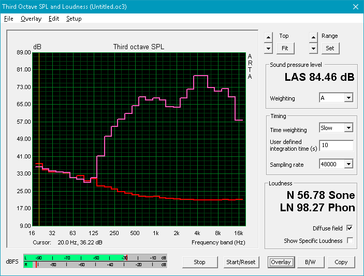
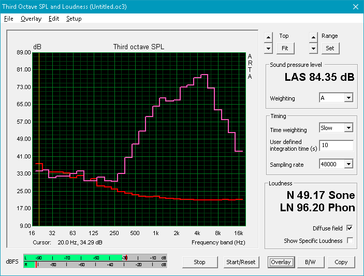
Lenovo Phab 2 Pro audio analysis
(+) | speakers can play relatively loud (84.5 dB)
Bass 100 - 315 Hz
(-) | nearly no bass - on average 22.8% lower than median
(±) | linearity of bass is average (11.4% delta to prev. frequency)
Mids 400 - 2000 Hz
(+) | balanced mids - only 2.2% away from median
(+) | mids are linear (4.7% delta to prev. frequency)
Highs 2 - 16 kHz
(±) | higher highs - on average 6.3% higher than median
(±) | linearity of highs is average (7.3% delta to prev. frequency)
Overall 100 - 16.000 Hz
(±) | linearity of overall sound is average (21.1% difference to median)
Compared to same class
» 39% of all tested devices in this class were better, 8% similar, 53% worse
» The best had a delta of 11%, average was 35%, worst was 134%
Compared to all devices tested
» 58% of all tested devices were better, 7% similar, 35% worse
» The best had a delta of 4%, average was 24%, worst was 134%
Apple MacBook 12 (Early 2016) 1.1 GHz audio analysis
(+) | speakers can play relatively loud (83.6 dB)
Bass 100 - 315 Hz
(±) | reduced bass - on average 11.3% lower than median
(±) | linearity of bass is average (14.2% delta to prev. frequency)
Mids 400 - 2000 Hz
(+) | balanced mids - only 2.4% away from median
(+) | mids are linear (5.5% delta to prev. frequency)
Highs 2 - 16 kHz
(+) | balanced highs - only 2% away from median
(+) | highs are linear (4.5% delta to prev. frequency)
Overall 100 - 16.000 Hz
(+) | overall sound is linear (10.2% difference to median)
Compared to same class
» 7% of all tested devices in this class were better, 2% similar, 91% worse
» The best had a delta of 5%, average was 18%, worst was 53%
Compared to all devices tested
» 4% of all tested devices were better, 1% similar, 94% worse
» The best had a delta of 4%, average was 24%, worst was 134%
Frequency Comparison (Checkbox selectable!)
Graph 1: Pink Noise 100% Vol.; Graph 2: Audio off
Energy Management
Power Consumption
Unsurprisingly, a large smartphone like the Phab 2 Pro consumes more power than its 5-inch competitors under all power states. We were able to record a minimum power draw of 3 W when idling on its Home screen on Airplane mode and on minimum display brightness whereas competitors draw about 1 to 2 W under similar conditions. The Lenovo will demand as much as 10 W when under heavy load or 8 W under extreme loads. The drop can be attributed to throttling of the SoC when both its CPU and GPU are stressed simultaneously.
| Off / Standby | |
| Idle | |
| Load |
|
Key:
min: | |
| Lenovo Phab 2 Pro 652 MSM8976, Adreno 510, 64 GB eMMC Flash, IPS, 2560x1440, 6.4" | Apple iPhone 7 Plus A10 Fusion, A10 Fusion GPU, 128 GB NVMe, IPS, 1920x1080, 5.5" | Huawei Mate 9 Kirin 960, Mali-G71 MP8, 64 GB UFS 2.1 Flash, IPS, 1920x1080, 5.9" | Asus Zenfone 3 ZE552KL 625, Adreno 506, 64 GB eMMC Flash, IPS, 1920x1080, 5.5" | Google Pixel XL 2016 SD 821, Adreno 530, 32 GB eMMC Flash, AMOLED, 2560x1440, 5.5" | |
|---|---|---|---|---|---|
| Power Consumption | 44% | 46% | 54% | 60% | |
| Idle Minimum * (Watt) | 3 | 0.77 74% | 0.78 74% | 0.83 72% | 0.53 82% |
| Idle Average * (Watt) | 4.1 | 2.04 50% | 2.13 48% | 2.11 49% | 1.07 74% |
| Idle Maximum * (Watt) | 4.2 | 2.24 47% | 2.17 48% | 2.12 50% | 1.12 73% |
| Load Average * (Watt) | 10.4 | 4.69 55% | 6.32 39% | 3.41 67% | 5.53 47% |
| Load Maximum * (Watt) | 8.1 | 8.66 -7% | 6.49 20% | 5.46 33% | 6.26 23% |
* ... smaller is better
Battery Life
The 4050 mAh non-removable battery is definitely larger than on many other smartphones including the LG G5 (2800 mAh) and iPhone 7 Plus (2900 mAh), though this does not necessarily translate into longer runtimes. In fact, battery life on the Phab 2 Pro is average at about 8.5 hours of WLAN use to be shorter than both the iPhone 7 Plus and Huawei Mate 9 and on par with the Google Pixel XL.
Charging from near empty to full capacity will only take about 1.5 hours with the supplied 2 A charging adapter. Otherwise, charging from a standard USB 3.0 port will take several hours.
| Lenovo Phab 2 Pro 652 MSM8976, Adreno 510, Wh | Apple iPhone 7 Plus A10 Fusion, A10 Fusion GPU, 11.02 Wh | Huawei Mate 9 Kirin 960, Mali-G71 MP8, Wh | Asus Zenfone 3 ZE552KL 625, Adreno 506, Wh | Google Pixel XL 2016 SD 821, Adreno 530, Wh | |
|---|---|---|---|---|---|
| Battery runtime | 33% | 34% | 58% | 12% | |
| Reader / Idle (h) | 18.7 | 30.6 64% | 25.6 37% | 25 34% | 22.2 19% |
| WiFi v1.3 (h) | 8.5 | 9.8 15% | 12.6 48% | 13.3 56% | 8.4 -1% |
| Load (h) | 3.2 | 3.8 19% | 3.7 16% | 5.9 84% | 3.8 19% |
Pros
Cons
Verdict
The big selling point of the Phab 2 Pro is its unique Tango hardware. At its current state, however, the feature is more of a novelty than it is a practical implementation. Aside from its gaming potential, Lenovo has promised the ability to navigate indoors and between rooms where GPS signals are often weak. Finding one's way through a museum or international airport, for example, is not yet available and would be wholly dependent on developer support. It's too early to brand Tango as a gimmick, but its software thus far feels thin and unrepresentative of the potential hidden behind the area-learning technology.
For users uninterested in Tango or being early adopters of the technology, the core smartphone features of the Phab 2 Pro are still solid. The screen is large and crisp with 4G and MicroSD support for good measure and its speakerphone is very clear compared to 5-inch competitors. CPU performance is fast and the smartphone feels dense to hold. Its other specifications are merely average for the category including the mid-range Adreno 510 GPU, battery life, and display colors and response times. Its lofty dimensions essentially require two-hand operation and could make users wish for a smaller version with the same Tango hardware.
As one of Lenovo's first official smartphones for the U.S. market, the Phab 2 Pro stands out with its sheer size and native support for Tango. If neither are attractive, however, then users will be left with a respectable, if not average, Android experience.
Lenovo Phab 2 Pro
- 12/06/2016 v6 (old)
Allen Ngo


